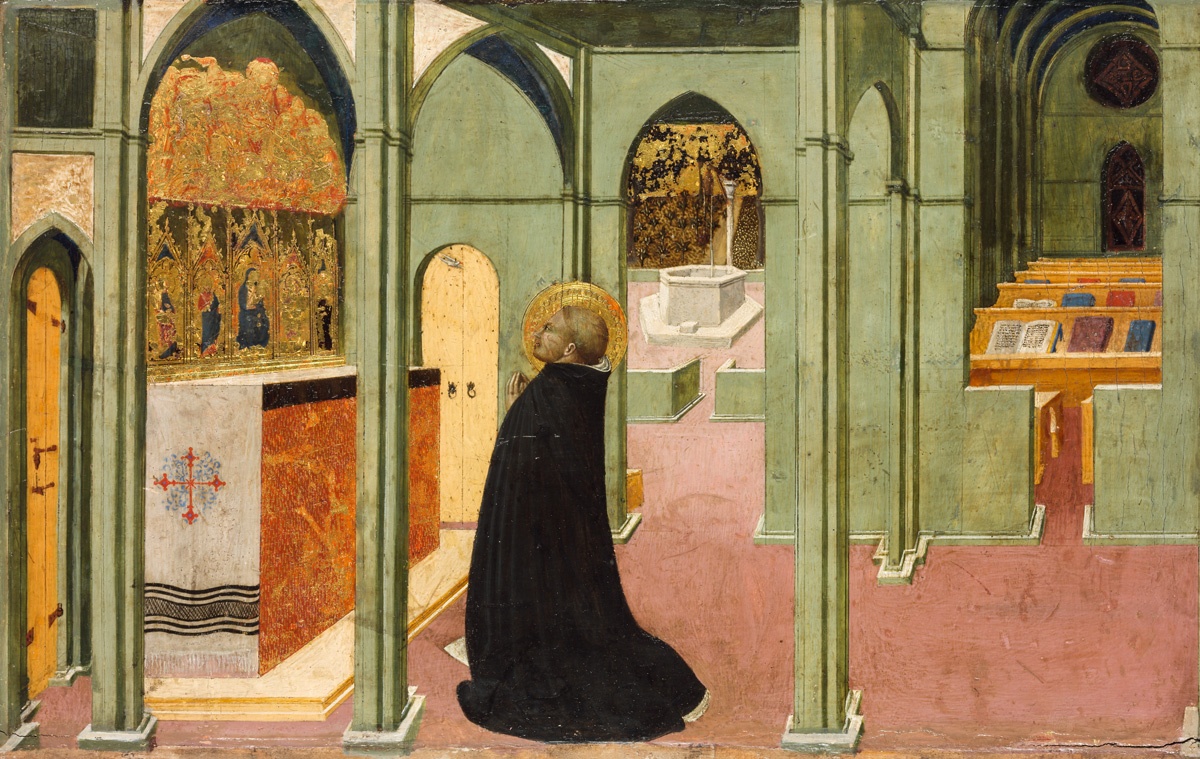You have written well of me, Thomas said the vision of Christ, according to the legend, to Saint Thomas of Aquinas, when he prayed for a sign of whether what he had written was true. The last great painter of the lyrical Sienese Gothic school, Sassetta’s brush brings to life with a kind of "magic realism" the enchanting world where the believer engages in intimate discourse with the divine sphere day by day. The saint now pleads for inspiration in front of a household altar, and his prayer is answered: Christ embodies in golden light and sends to him the dove of the Holy Spirit. The miracle takes place in the interior of a monastery, brought to life with many familiar details. The codices left open on the desks remind us the friars who used to fill the library with life. In the background a view opens onto a garden and within it a fountain, the centre of everyday life in the monastery. This tiny masterpiece comes from a polyptych’s predella, the horizontal base supporting the larger pictures. The altarpiece was commissioned by the Sienese guild of wool merchants, and was kept locked in a cupboard in the guild’s headquarters. Each year however on the feast of Corpus Christi it was erected in front of the building, and an open-air mass was celebrated before it to the participants in the procession. The tradition lasted until the sixteenth century, when the altarpiece was moved into a church. Finally it met the fate of so many medieval polyptychs: it was sawn into pieces and sold to art collectors.Axel Vécsey
en

